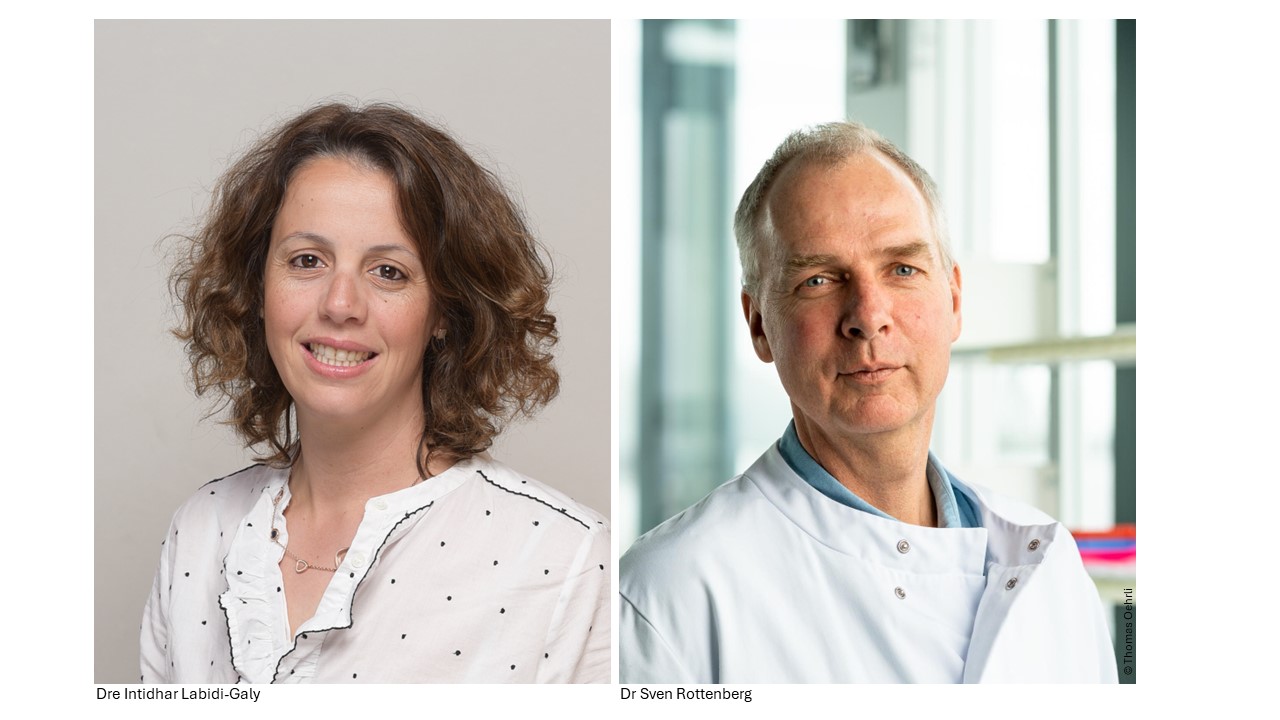Ovarian Cancer – Dr. Intidhar Labidi-Galy (HUG) and Dr. Sven Rottenberg (UNIBE)
Analyzing the role of the tumor microenvironment in platinum drug-resistant ovarian cancer

High grade serous ovarian carcinoma (HGSOC) is the deadliest gynaecological cancer, with a median survival rate of 3 years. Standard treatment involves surgery followed by chemotherapy, typically using platinum and taxane agents. While chemotherapy frequently works well initially to shrink tumors, most women later develop platinum-resistant tumors, that are often fatal. This TANDEM project aims to understand the underlying factor of this resistance, in order to improve immunotherapeutic approaches and develop more effective treatments.
Treatment of HGSOC is a major clinical hurdle, not only because of the commonly developed resistance to chemotherapy, but also due to the fact that it does not respond to recently discovered therapies such as immune checkpoint and targeted T-cell therapies. The reasons for its chemotherapy resistance and insensitivity to immune checkpoint therapy remain unclear.
In this project, the team uses a unique set of patient-derived samples that were collected after resistance had developed and applies cutting-edge molecular technologies to analyze the spatial distribution of cellular and subcellular compartments. Through this, they aim to understand the disease heterogeneity and pinpoint changes that result in resistance.
Preliminary data suggest that platinum-resistant HGSOC is characterized by the accumulation of immune cells called tumor-associated macrophages. These cells are the most common cells in the tumor microenvironment and play a vital role in cancer survival and progression. Leveraging imaging and sequencing tools, the team will identify cell types responsible for resistance, and will gain insight into the spatial distribution and status of the tumor associated macrophages. In this way, they hope to decipher the role these macrophages play in the platinum resistance of HGSOC. Ultimately, these results may lead to an improvement of immunotherapeutic approaches, specifically in the case of platinum-resistant HGSOC.

